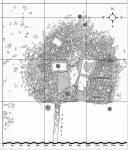Summary (English)
ARCHAEOLOGICAL EXCAVATIONS NEAR THE VILLAGE OF BELEVREN (Daniela Agre – daniela.agre@abv.bg) The dolmen is situated in a tumulus constructed of uneven stones, 13.20 m in diameter and 1.20 m in height. Two cist graves, oriented east – west, are discovered in the western half of the tumulus. The dolmen is tri-partite, constructed of granite slabs and oriented north – south. The dromos, the antechamber and the burial chamber were covered with horizontal slabs. The dromos has a trapezoidal cross-section and is 1.27 m long, 1.10 m wide and 1.30 m high. The finds include two bronze fibulae, a glass bead and two fragmentary ceramic cups. The antechamber has a trapezoidal cross-section and is 1.60 m long, 1.60 m wide and 1.85 m high. The entrance to the antechamber is cut in its southern wall and is trapezoidal. Its height is 53 cm, its width at the bottom is 33 cm and its width at the top is 28 cm. Six ceramic vessels, two glass beads, three fibulae and a human skull were found. The burial chamber has a trapezoidal cross-section and is 2 m long, 1.40 m wide and 1.90 m high. The entrance to the burial chamber is cut in its southern wall and is trapezoidal. Its height is 55 cm, its width at the bottom is 36 cm and its width at the top is 26 cm. Six ceramic vessels, six fibulae, a spindle whorl, two glass beads and human bones were found. The façade of the dolmen is 4.50 m long from the west and 3.50 m long from the east. It s built of uneven stone slabs bonded with mud. Sherds of c. 15 vessels, two bronze fibulae, a glass and two ceramic beads were found in front of the façade. Some of the fibulae from the dolmen find parallels among the fibulae of Phrygia, the Anatolian coast and the Aegean islands during the 8th – 7th centuries BC. The dolmen was built in the middle of the 8th century BC. It was used until the middle of the 7th century BC.
- Daniela Agre - Archaeological Institute with Museum
Director
Team
Research Body
- Archaeological Institute with Museum






![Download [PDF]](/excavation/skins/fasti/images/results/download_sml.png)